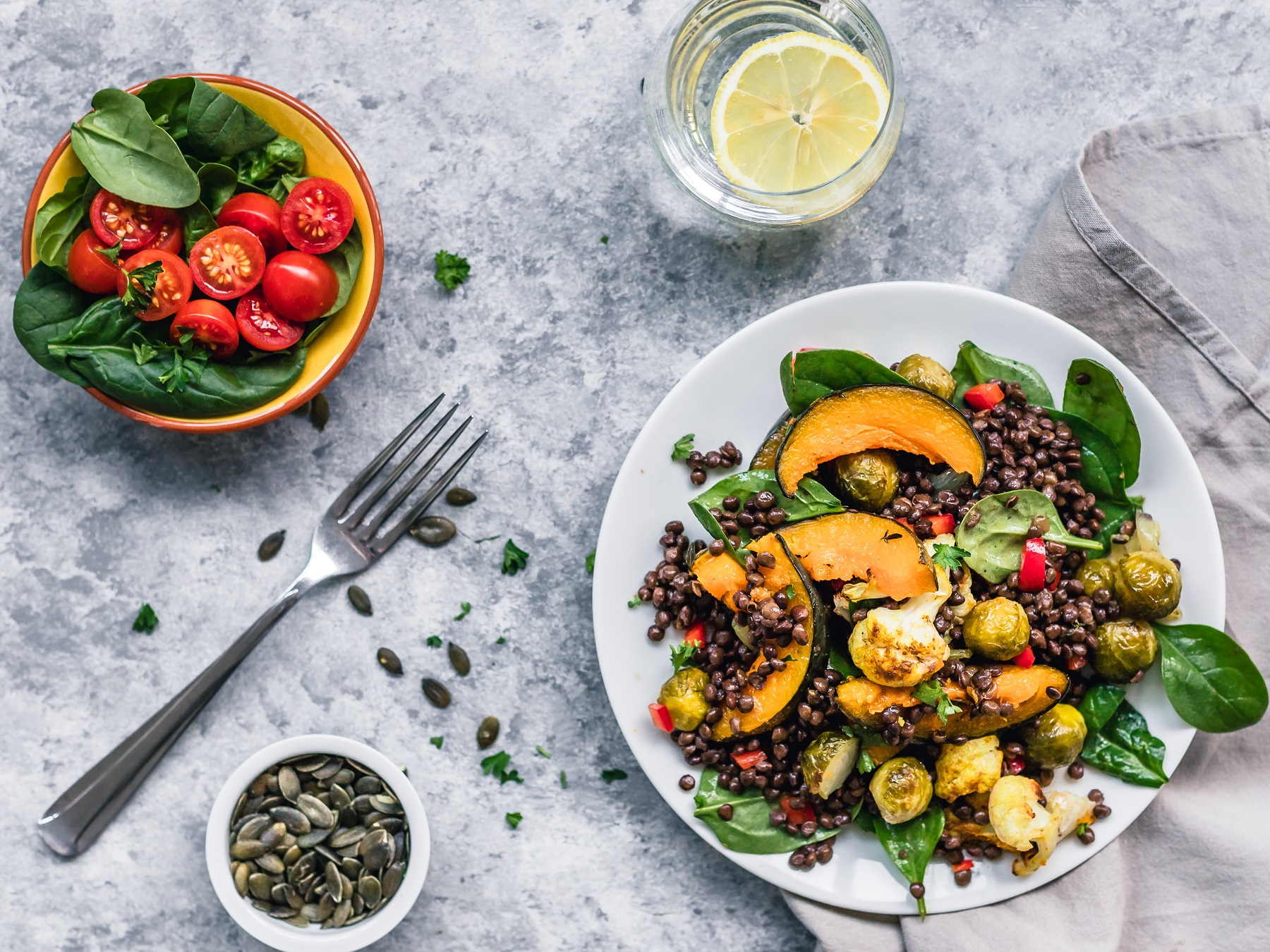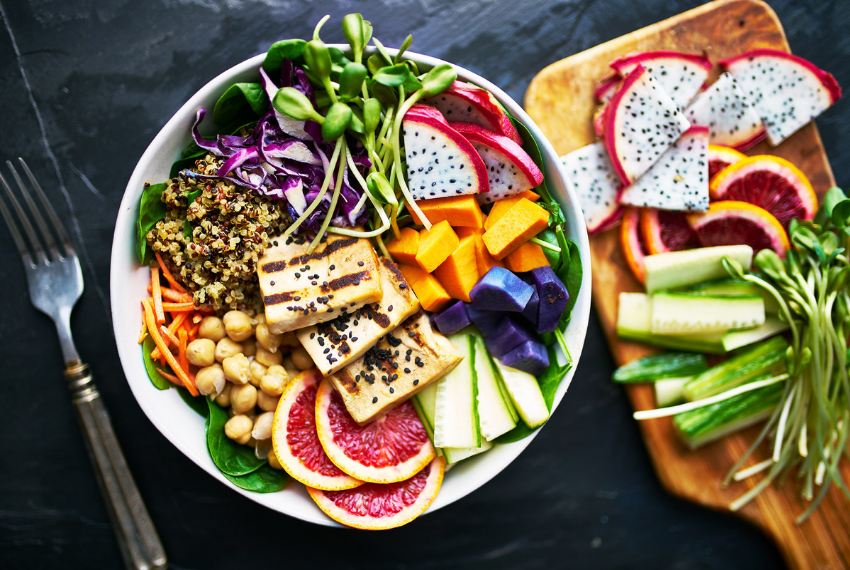
Did you know that the human body is home to 100 trillion bacterial cells? Understanding the relationship between these gut bacteria and human health is currently a hot topic in health and fitness circles.
But how do we get our personal ecosystem of 100 trillion residents of bacteria functioning for our own benefit? Firstly, we need to understand how they work.
Understanding your gut and its bacteria
The microorganisms that reside in and on the human body make up our human microbiome – and the greatest number of these microorganisms are found in our gut – aka the gut microbiome.
Most of the microorganisms that make up our gut microbiome are bacteria, although a small proportion also consists of viruses, fungi, protists and archaea.
The types of microorganisms living in our gut vary from person to person. Find out what's living in your microbiome.
Bacteria found in the gut extract and store energy from the food our body cannot digest, such as fibre and excess protein 1,2.
When our gut bacteria ferments prebiotics such as some types of fibre, they primarily produce beneficial short chain fatty acids (SCFAs)2.
When our gut bacteria ferments protein, they produce a variety of compounds, some of which are pro-inflammatory. To better understand the relationship between gut bacteria, prebiotic fibres, SCFAs and the associated health benefits of these, let’s first look at what constitutes a prebiotic and the foods you can find them in.
What are prebiotics and where can I find them?
Prebiotics are foods that cannot be digested by our body and are instead passed to the large intestine where they promote the growth of beneficial bacteria found there3.
Prebiotics can include both fibre and phytochemicals (chemicals from plants). They are primarily found in plant-based foods such as fruits, vegetables, wholegrains, nuts, seeds and legumes4. The different types of prebiotics can be grouped into the following categories:
Resistant oligosaccharides – These are the best studied prebiotics because they promote the growth of Bifidobacteria3. They are commonly found in foods such as wheat, rye, chickpeas, lentils, onion and garlic4.
Non-starch polysaccharides – These can be found in a variety of plant-based foods such as rye, wheat, barley, oats, apples and plums4.
Resistant starch – This prebiotic has been found to promote the production of the short chain fatty acid butyrate5,6. You can find resistant starch in lentils, peas, beans, rolled oats and green bananas. The resistant starch content of rice and potatoes increase once you cook and cool these prior to eating4.
Phytochemicals – Phytochemicals such as polyphenols are well studied for their health benefits. These are found in plant-based foods such as berries, plums, herbs and spices, artichokes, red onions, dark chocolate, and nuts7.
Want to know more about prebiotics; what they are and why they’re so important? Learn more.
How do gut bacteria produce short chain fatty acids from prebiotics?
When undigested prebiotics reach the large intestine, they are broken down by bacteria in a process called fermentation. Fermentation is the way bacteria extract energy from the breakdown of organic products (such as fibre) in the absence of oxygen.
When prebiotic fibres are fermented, they primarily produce the SCFAs acetate, propionate and butyrate8. After their production, these SCFAs are transported to the liver, the blood circulation, or absorbed by intestinal cells where their effects can influence systems throughout the body9.
How can short chain fatty acids support health?
SCFAs provide a range of health benefits in humans including maintaining the intestinal cell barrier, reducing inflammation, regulating appetite and maintaining glucose balance9,10. New roles for each SCFA are still being discovered, but so far we know they are involved in the following:
Acetate is the most abundant short chain fatty acid produced in the gut and much of it enters the blood circulation where it plays an important role in fat metabolism, immune regulation and signaling the body to make you feel full after you’ve eaten9. Acetate can also be converted by other gut bacteria into butyrate9.
Butyrate plays a critical role in maintaining the health of our gut. It is the main fuel source for our gut cells, helps to maintain the gut cell barrier, suppresses inflammation through regulation of the immune system, helps balance glucose levels in the gut and helps regulate appetite11,12.
Propionate is transported to the liver where it plays an important role in balancing glucose levels. Additionally, it can suppress inflammation and help regulate appetite9,13.
As a group, acetate, butyrate and propionate have all been linked to reducing gastrointestinal disorders, colon cancer and cardiovascular disease14,15.
SCFA are an integral part to maintaining good overall health. Discover what your microbiome needs to support SCFA production.
Where to now?
Most studies on prebiotics to date are laboratory-based and have only investigated how well specific bacterial species grow when given specific prebiotics. Given the diversity and unique nature of the human gut microbiome, precise effects from eating prebiotics cannot be established, as every individual has varying levels of different bacteria that will produce different amounts of SCFAs.
However, no matter what your levels of specific bacteria, eating more prebiotics will help feed the beneficial bacteria in your gut and help boost your SCFA production, so make sure to include a good diversity of fruits, vegetables, legumes and cereal grains in your diet!
If you want to know more about the makeup of your gut bacteria, the Microba Insight™ test and report can highlight the genetic potential of bacteria in your gut to produce each of these key short chain fatty acids.
 The report also contains a list of prebiotic rich foods which may help to promote the growth and activity of beneficial bacteria commonly found in the microbiome. You will receive a complementary session with a Microbiome Coach, who will talk you through your results, insights and answer any questions you may have. This guidance can also assist in your next steps towards better gut health.
The report also contains a list of prebiotic rich foods which may help to promote the growth and activity of beneficial bacteria commonly found in the microbiome. You will receive a complementary session with a Microbiome Coach, who will talk you through your results, insights and answer any questions you may have. This guidance can also assist in your next steps towards better gut health.
Start your journey with a Microba Insight Test Kit.
This microbiome test is not intended to be used to diagnose or treat medical conditions. A full disclaimer is available here
References
1. Clemente, J. C., Ursell, L. K., Parfrey, L. W. & Knight, R.
The impact of the gut microbiota on human health: an integrative view. .
Cell 148, 1258–1270 (2012)
2. Singh, R. K. et al..
Influence of diet on the gut microbiome and implications for human health. .
J. Transl. Med. 15, 73 (2017).
3. Gibson, G. R. et al..
Expert consensus document: The International Scientific Association for Probiotics and Prebiotics (ISAPP) consensus statement on the definition and scope of prebiotics..
Nat. Rev. Gastroenterol. Amp Hepatol. 14, 491 (2017).
4. Stephen, A. M. et al..
Dietary fibre in Europe: current state of knowledge on definitions, sources, recommendations, intakes and relationships to health..
Nutr. Res. Rev. 30, 149–190 (2017).
5. McOrist, A. L. et al..
Fecal Butyrate Levels Vary Widely among Individuals but Are Usually Increased by a Diet High in Resistant Starch..
J. Nutr. 141, 883–889 (2011).
6. Venkataraman, A. et al..
Variable responses of human microbiomes to dietary supplementation with resistant starch..
Microbiome 4, 33 (2016).
7. Pérez-Jiménez, J., Neveu, V., Vos, F. & Scalbert, A..
Identification of the 100 richest dietary sources of polyphenols: an application of the Phenol-Explorer database..
Eur. J. Clin. Nutr. 64, S112 (2010).
8. Blaut, M..
Relationship of prebiotics and food to intestinal microflora..
Eur. J. Nutr. 41, i11–i16 (2002).
9. Chambers, E. S., Preston, T., Frost, G. & Morrison, D. J..
Role of Gut Microbiota-Generated Short-Chain Fatty Acids in Metabolic and Cardiovascular Health..
Curr. Nutr. Rep. 7, 198–206 (2018).
10. Tan, J. et al..
Chapter Three - The Role of Short-Chain Fatty Acids in Health and Disease..
Advances in Immunology (ed. Alt, F. W.) 121, 91–119 (Academic Press, 2014).
11. Cushing, K., Alvarado, D. M. & Ciorba, M. A. .
Butyrate and Mucosal Inflammation: New Scientific Evidence Supports Clinical Observation..
Clin. Transl. Gastroenterol. 6, e108 (2015).
12. Bourassa, M. W., Alim, I., Bultman, S. J. & Ratan, R. R..
Butyrate, neuroepigenetics and the gut microbiome: Can a high fiber diet improve brain health?.
Epigenetics Disord. Nerv. Syst. 625, 56–63 (2016).
13. Morrison, D. J. & Preston, T..
Formation of short chain fatty acids by the gut microbiota and their impact on human metabolism. .
Gut Microbes 7, 189–200 (2016).
14. Gill, P. A., van Zelm, M. C., Muir, J. G. & Gibson, P. R..
Review article: short chain fatty acids as potential therapeutic agents in human gastrointestinal and inflammatory disorders..
Aliment. Pharmacol. Ther. 48, 15–34 (2018).
15. Sara Daniela Gomes et al..
The Role of Diet-Related Short-Chain Fatty Acids in Colorectal Cancer Metabolism and Survival: Prevention and Therapeutic Implications..
Curr. Med. Chem. 25, 1–19 (2018).


